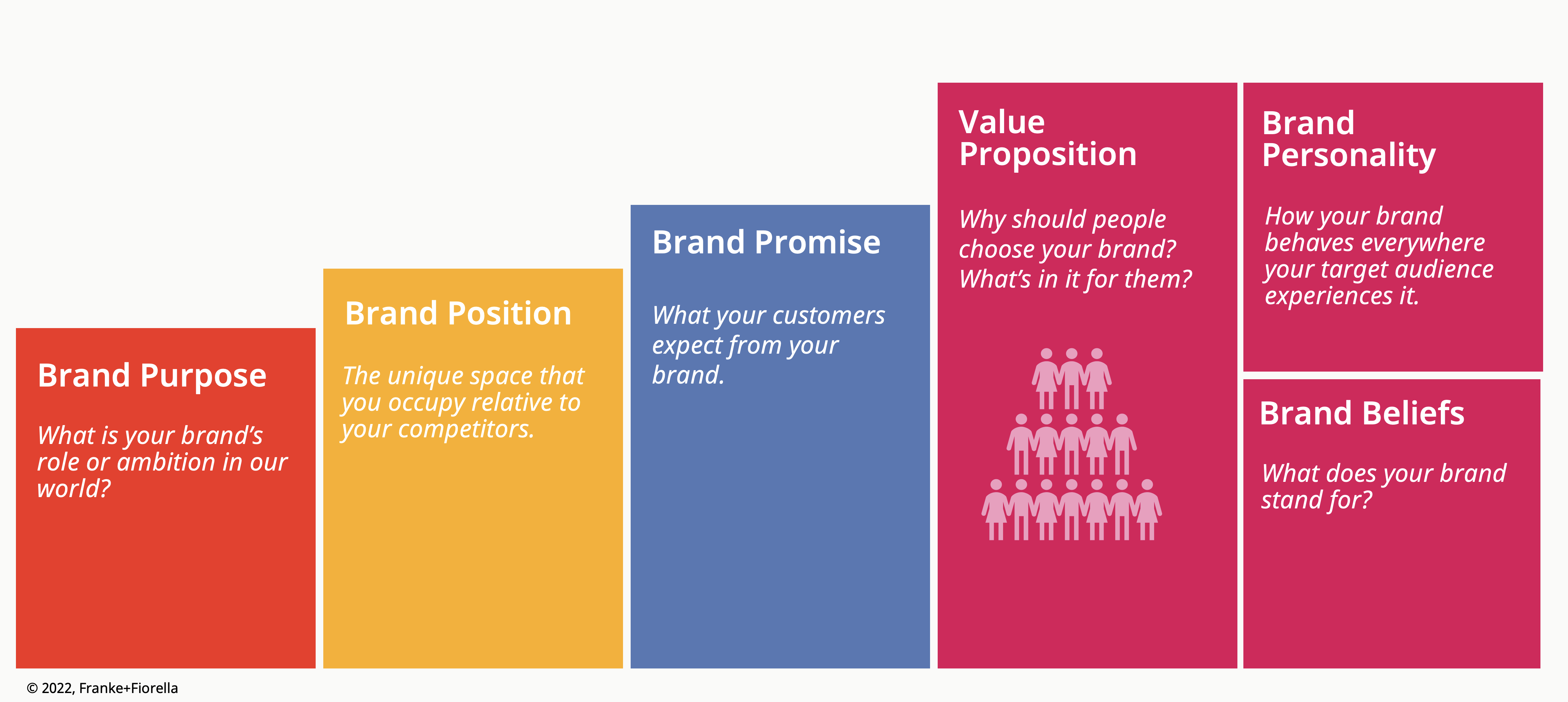6 Elements of an Effective Brand Strategy
A brand strategy is critical for any organization that wants to create a strong and recognizable brand. Whether the brand you’re building is for a business, non-profit organization, school, product or service, you need a robust brand strategy upon which to build your brand identity. We know there’s a lot of information and misinformation about what a brand strategy is and is not, so we want to share our perspective.
With almost three decades of experience in developing leading brands, our team is familiar with this process and its nuances at a fundamental level.
Let’s start with what a brand strategy is not. Your brand strategy is not your visual identity, messaging, or tagline. These are all developed later and are based on your brand strategy. It also is not any of the inputs or outputs you use to create your brand strategy or bring it to life, like market research, target audience, or brand story.
Everything — from your brand name, logo and visual identity system to your packaging, messaging, tagline and every other touchpoint — is designed intentionally to outwardly reflect your brand strategy.
It’s also important that your brand strategy connect back to your business strategy so that you’re using your brand to deliver value to your customers while also returning the highest value to the organization.
There are six key elements to any successful brand strategy. Each component should be included in your brand strategy—your brand purpose, positioning, brand promise, brand personality, brand beliefs and value proposition. Together, this forms your brand strategy framework.
Brand Strategy Framework

Below we share more detail about each component:
- Brand Purpose
Why do you exist? As Simon Sinek says, what is your Why? Your brand purpose statement is a sentence or two that articulates the reason why your brand exists. It should be clear, concise, and inspiring. It should be something that your team can rally behind and that your customers can connect with.
Your brand purpose should be timeless and aspirational. It should not be tied to any specific product or service offering, as these things will change over time.
Above all, your purpose statement should be authentic and true to your brand’s core values. It should not be something that you think people want to hear or that is simply a marketing gimmick. - A Clear Brand Position
The next element of an effective brand strategy is a clear positioning statement. This statement should succinctly describe what your brand stands for and what makes it different from your competitors. Your “position” is that place your brand occupies in the mind of your customers and prospects relative to the competition. - A Compelling Brand Promise
Your brand promise is the specific benefit that you pledge to provide to your customers. It’s important that your promise connects at an emotional level. It should be relevant to your audience’s needs and desires, and it should be something that your competitors are not offering. Your brand promise should be simple, memorable and achievable. - A Distinctive Brand Personality
Crafting a unique and memorable brand personality is another important element of an effective brand strategy. Your brand personality should reflect the behavioral traits that you want your customers to associate with your brand. If you think about your brand as a person — how would it behave? Would it be bold? Curious? Compassionate? Funny? Be sure that the personality traits you choose align with your brand purpose, position and promise. - Brand Beliefs
Today, Gen Z, millennials and, we would argue, even some Gen Xers and baby boomers only want to support brands that align with their values. This is why it’s so important for brands to identify what their beliefs are, communicate them and act in accordance with them. - Value Proposition
Why should people buy your brand of whatever it is that you’re selling? What makes your product or service unique? Your value proposition should convey what value the user will derive from using your product or service. It should be clear, concise, and easy for potential customers to understand. It needs to convey how your brand is different and better than your competitors’.
Creating a strong, recognizable brand for your organization can pay big dividends. By developing brand loyalty which will help you grow your customer base, you’ll begin to build brand equity.
So, the best place to start your brand-building journey is with a robust brand strategy. If you based it on the six key elements we shared above — brand purpose, positioning, brand promise, brand personality, brand beliefs and value proposition — you’ll be off to a great start.


